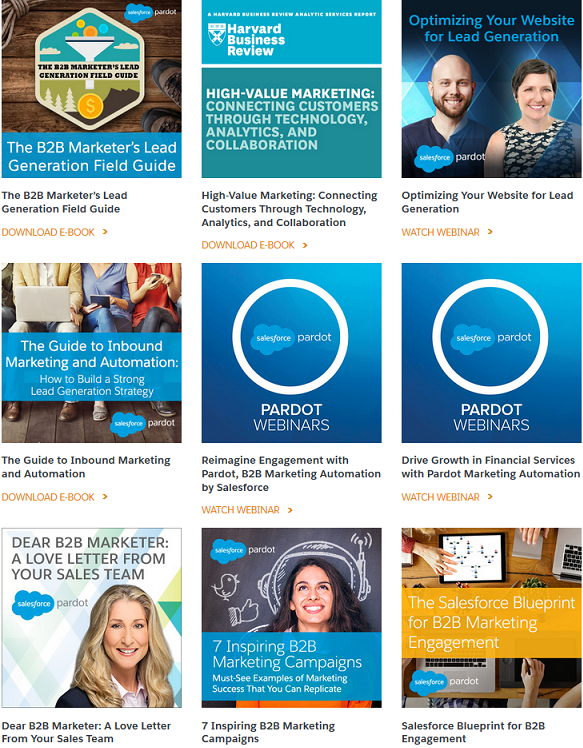The #1 Common Thing in All Successful Content Marketing Campaigns
The very thought of developing a content marketing campaign is overwhelming. Lots of details to plan, research to do, delegating, organizing, tweaking, monitoring and improving. It is your baby – you have to wait for it to grow limbs, come into the world, and take its first steps. And then be vigilant; ensure that the results of the campaign meet your expectations and use insights from it to inform subsequent campaigns. There’s a hell of a lot to do.
You can’t win without a documented plan
A content marketing campaign is a sum of its parts. It must therefore be planned meticulously and followed through diligently. A successful campaign is born out of a documented strategy aligned to clearly defined goals. Unless you know why you’re doing what you’re doing, there’s little point to mindless social media posting and blog publishing every day or week.
A plan helps to set a clear intention behind every piece of content you share and a certain expectation about the corresponding action(s) from your community.
Some questions to ask when framing your plan
- What goals do I want to achieve with this campaign? Ex : increase brand awareness, boost website traffic, generate more leads, convert leads to customers, drive upsell, grow email database, promote a new product/service, etc.
- What kind of content must I create to capture the attention of potential customers/existing customers/influencers?
- Which channels are popular among my target audience? Where are they most likely to congregate? Which social media communities/groups do they like?
- How much time can I/my team afford to spend each day/week on this campaign?
- How soon before I start seeing results? What measurement system and metrics will help me determine the effectiveness of my campaign more easily and accurately?
- What can I do to ensure that the campaign does not hit a plateau or come to a standstill? For instance, if you’re promoting blog posts, case studies or videos on a new product, and enlisting the help of employees to publicize it on social media, an employee advocacy platform that simplifies sharing and incentivizes it can prevent the campaign from stagnating.
What kind of content is ‘king’?
The biggest test of your campaign is the quality and marketability of content. Here, a deep understanding of your audience’s interests and needs is critical. If you’re trying to market your new offering to business managers and executives, case studies, whitepapers and ebooks give you the opportunity to demonstrate your industry expertise.
If you will be creating B2C content, blog posts and multimedia content may work better. Of course, there isn’t any ‘right’ or ‘wrong’ way of creating B2B and B2C content. Your whitepaper can be entertaining and not so stuffy – Pardot’s whitepapers have catchy titles and attractive cover pages that don’t make you feel like you’re about to read a thesis.

B2C content often relies on creating an emotional connect – often through story-telling – a tactic that works very well. Consumers are more interested in understanding how your product/service can meet their need and less about your experience, leadership and domain expertise. Still as the potential customer personas can be vast, what works for one audience may not work for another.
Health and fitness company Life Time Fitness publishes its online and print magazine Experience Life ten times a year. The company intends it to serve as an educational tool, helping members build on their existing knowledge and take even smarter decisions on their well-being. Interestingly, of the magazine’s 600,000 strong subscriber base, not all are members of Life Time Fitness.

It is safe to assume that people respond to two types of content:
- Informational content that helps them in some way and provides value. It can take the form of a well-researched blog post that presents a position and backs it up with facts and data. Not unlike a long-form piece in New York Times, Washington Post or The Guardian, which is interpretative and interesting in equal measure.
- Content that appeals to their emotions and encourages them to reciprocate in some way. Here, customer personas will be very useful in understanding the lives, desires and expectations of the demographic you will be targeting. You can use this information to evaluate what kind of content is most likely to resonate with your target audience.
Leverage influencer outreach
Influencer outreach is just an important a customer acquisition channel as email marketing, affiliate marketing, organic search and paid search. Influencers in your industry can help expand the reach of your brand by promoting your content among their vast number of fans and followers.
Smart Insights identifies ten types of influencers; here’s a quick look at them:
Save time managing your social media accounts
Are you still managing your social media accounts directly from Facebook/Twitter/LinkedIn? Make your life easier by managing all your social media in one place, schedule posts, repeat posts, curate content and more. Try DrumUp now, it's free, forever.
- The celebrity (can work well for fashion, fitness and lifestyle products)
- The authority (someone whose advice is solicited and trusted by a large and devoted community)
- The connector (a networking ninja who can help you build strategic relationships)
- The personal brand (someone who will promote your brand in exchange for you doing the same for him/her)
- The analyst (who can benefit from your experience, analysis and findings, which translates into publicity for you)
- The activist (someone who may not agree with you, but can still engage you to gain multiple viewpoints and give audiences something to chew on)
- The expert (whose opinions you can quote in your content to support/prove a point and achieve credibility)
- The insider (someone with whom you can engage in a healthy debate)
- The agitator (who is always up for a debate and willing to consider contrarian views)
- The journalist (who can be your personal PR machine when you need to publish timely or important news)
Consistency is key
Share a steady stream of purposefully created content on your blog, social media sites and other online channels where your audience lurks. To manage multiple social media accounts and save time on daily/weekly posting, consider using social media management app DrumUp.
Evaluate whether you want to create a mix of evergreen and trending content, each with its own specific goals. Make sure you maintain a consistent brand voice to be easily recognizable and keep the quality bar high so readers come back for more, and customers are encouraged to stay loyal.
Image credit : Pixabay